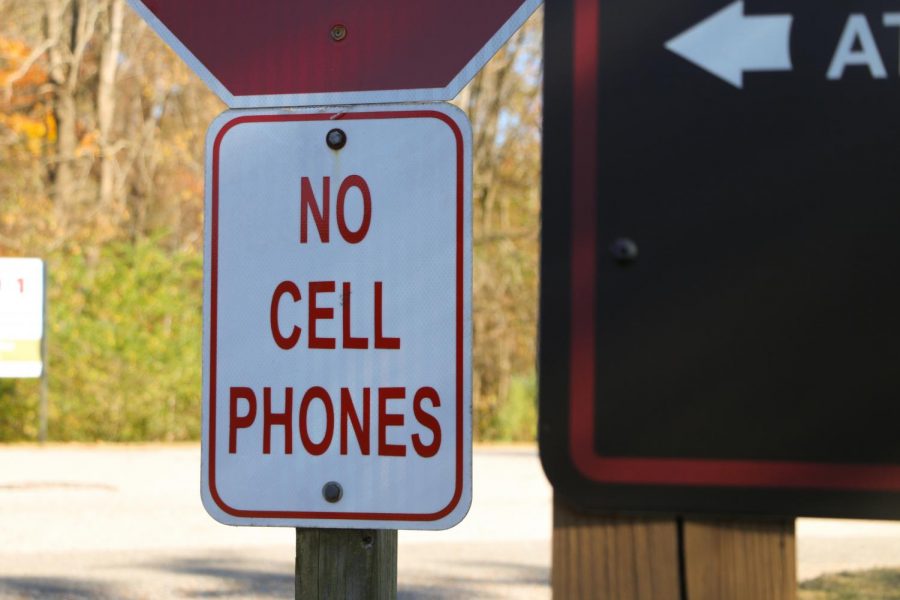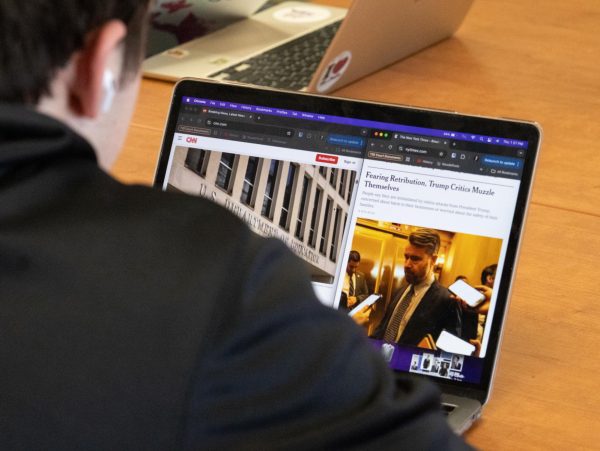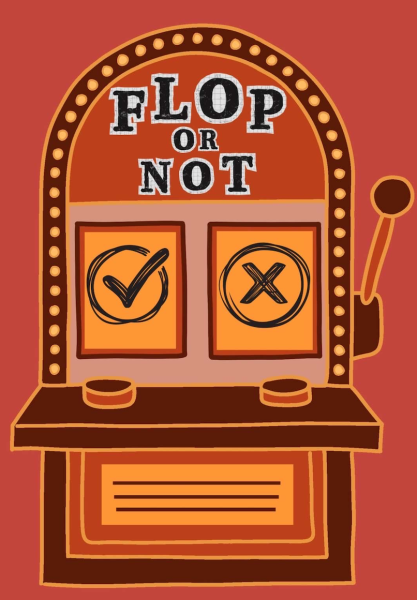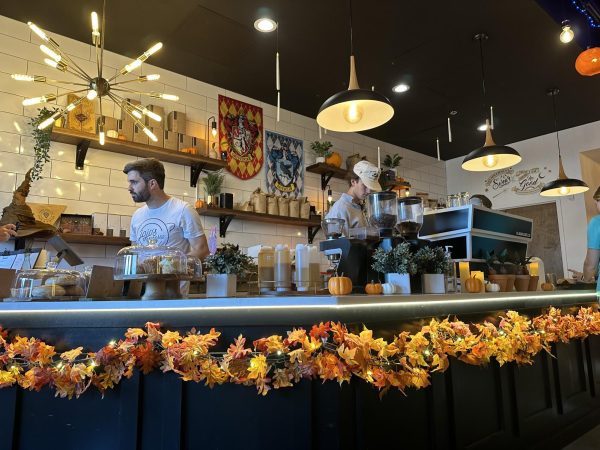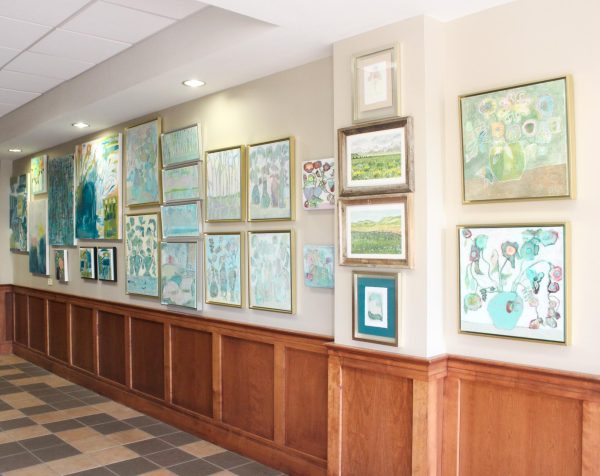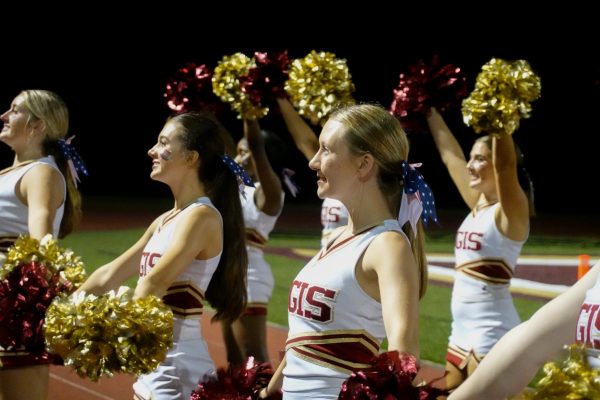Mixed Messages
Let’s make a safer start for students
Photo: Callie Hollis
A “No Cell Phones” sign sits underneath the stop sign at the Houston Levee entrance to St. George’s. Since August, students have been using their cell phones to fill out a health survey before school.
On school mornings, my mom fills out my app, takes a screenshot of the green “GO” sign, and sends it to me so that I can easily pull up my results and pull through to park when I get to school. Before my mom and I figured out this process, I did my own app. I would fill it out at breakfast most of the time, but on days I forgot, I would remember on the way to school. I’d find myself filling out questions on my phone at stop signs and traffic lights, which resulted in a few angry drivers when I sat there for too long.
Every morning Mr. Tom Link stands out in the parking lot, rain or shine, checking the apps of every student that drives themselves to school.
The most stressful part of my morning is still turning into the parking lot one handed in attempts to show my app with my other hand. I turn right into the parking lot, then another immediate right to show my Magnus app. Mr. Link usually takes a step back so I don’t hit him in my turning process, then he waves me on, I drop my phone and go on to park.
One of the many things that changed on our campus this year due to the coronavirus pandemic is the setup and basic flow of our parking lots. The senior lot now houses the entire upper school and the lot previously reserved for non-senior drivers is now used as a holding lot for middle school parents who have yet to complete their student’s Magnus Health App.
The Magnus Health App monitors the health of the students, staff and faculty on all campuses. Students and parents fill out a survey within the app, and it indicates whether or not they are allowed to go to school that day.
Currently, Upper School students who have completed the daily health survey turn into the parking lot and show their phone screen to Mr. Link and he waves them on to park. If the students have not completed their survey, they are required to pull into the first few parking spots in the lot to complete the survey.
When students can’t display proof of completion, it disturbs the flow of the entire lot. They park, complete their survey and get out of their cars to show Mr. Link. Then they have to back out of the parking spot to find a different spot, putting a pause on the flow of cars coming in. It is a major inconvenience for student drivers to wait for cars due to incomplete apps.
The process seemed like a good system on paper: students complete their survey, they show their screen upon entry to the parking lot, they park. Easy, right? But there’s a little more to it than that. Students must show their proof of completion as they drive up to the entrance of the parking lot. This means that students are turning at a three-way intersection into the parking lot, then immediately turning again to show their apps, all while holding their cell phones.
Students are told time and time again by teachers, parents, peers and loved ones to be safe while they’re driving. Driver’s education programs cover the topic of cellphone usage while driving for a large portion of the course. According to Tennessee Texting and Driving Laws, 21% of fatal car accidents involving teenage drivers are caused by cell phone usage. Yet our school is requiring its students to have a cell phone in their hands while driving.
However, there is an easy solution that can keep everyone safe. In addition to the Magnus App as a health precaution in the morning, students’ temperatures are taken upon entry of the building. Instead of having students show their apps while behind the wheel, They can then show their apps at the door while their temperature is being taken. They can then drive into the parking lot and park, allowing time for them to complete their survey safely in their parked vehicle.


